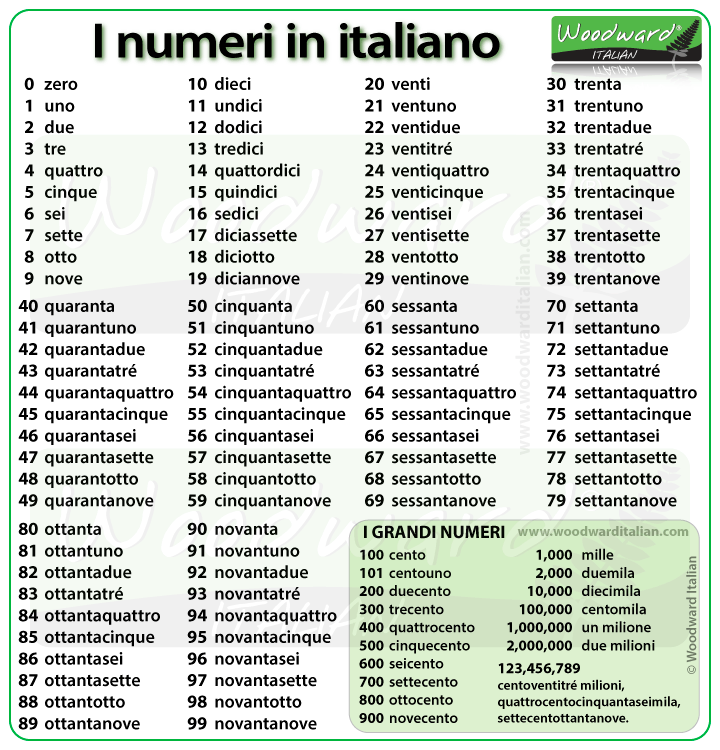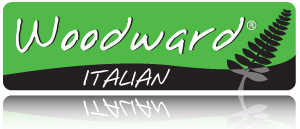Listen to the pronunciation of all of the numbers from 1 to 100 by a native Italian speaker in the video.
Numbers from 1 to 100 in Italian
We have already seen the numbers from 1 to 10 in Italian.
- 1 – uno
- 2 – due
- 3 – tre
- 4 – quattro
- 5 – cinque
- 6 – sei
- 7 – sette
- 8 – otto
- 9 – nove
- 10 – dieci
Now we will take it to the next level…
Numbers from 10 to 20 in Italian
The numbers from 10-20 are mostly irregular so unfortunately you will just have to learn them by heart.
- 10 – dieci
- 11 – undici
- 12 – dodici
- 13 – tredici
- 14 – quattordici
- 15 – quindici
- 16 – sedici
- 17 – diciassette
- 18 – diciotto
- 19 – diciannove
- 20 – venti
Numbers from 20 to 100 in Italian
To write the numbers from 20 to 99 in Italian, you just add the single number (units) to the tens number.
- venti (20) + due (2) = ventidue (22)
- trenta (30) + sette (7) = trentasette (37)
- quaranta (40) + nove (9) = quarantanove (49)
EXCEPTION: when you add the number 1 or 8 to the end.
The final vowel of the tens number disappears when you add uno (1) or otto (8).
- venti (20) + uno (1) = ventuno (21 correct) – not ventiuno (incorrect)
- venti (20) + otto (8) = ventotto (28 correct) – not ventiotto (incorrect)
- cinquanta (50) + uno (1) = cinquantuno (21 correct) – not cinquantauno (incorrect)
- settanta (70) + otto (8) = settantotto (78 correct) – not settantaotto (incorrect)
EXCEPTION: when you add the number 3 to the end.
When you add the number tre (3) to the end of a tens number, the final vowel (the e) becomes é (with the accent mark – notice the direction of it) and that final syllable is stressed.
- ventitré (23)
- trentatré (33)
- ottantatré (83)
Italian numbers from 0-100 summary chart

We have a printable version of this chart available for teachers, parents and students: Italian Numbers 1-100 Chart
Italian Numbers 1-100 Quiz
Che numero è? … means … What number is it?
This activity in the following is to practice the numbers from one to ten in Italian.
A photo or image of a number will appear on the screen in digit form (e.g. 88).
You have 5 seconds to say that number in Italian before it appears written in words (e.g. ottantotto).
When the answer is revealed, it is accompanied by the pronunciation of that number by a native Italian speaker.
